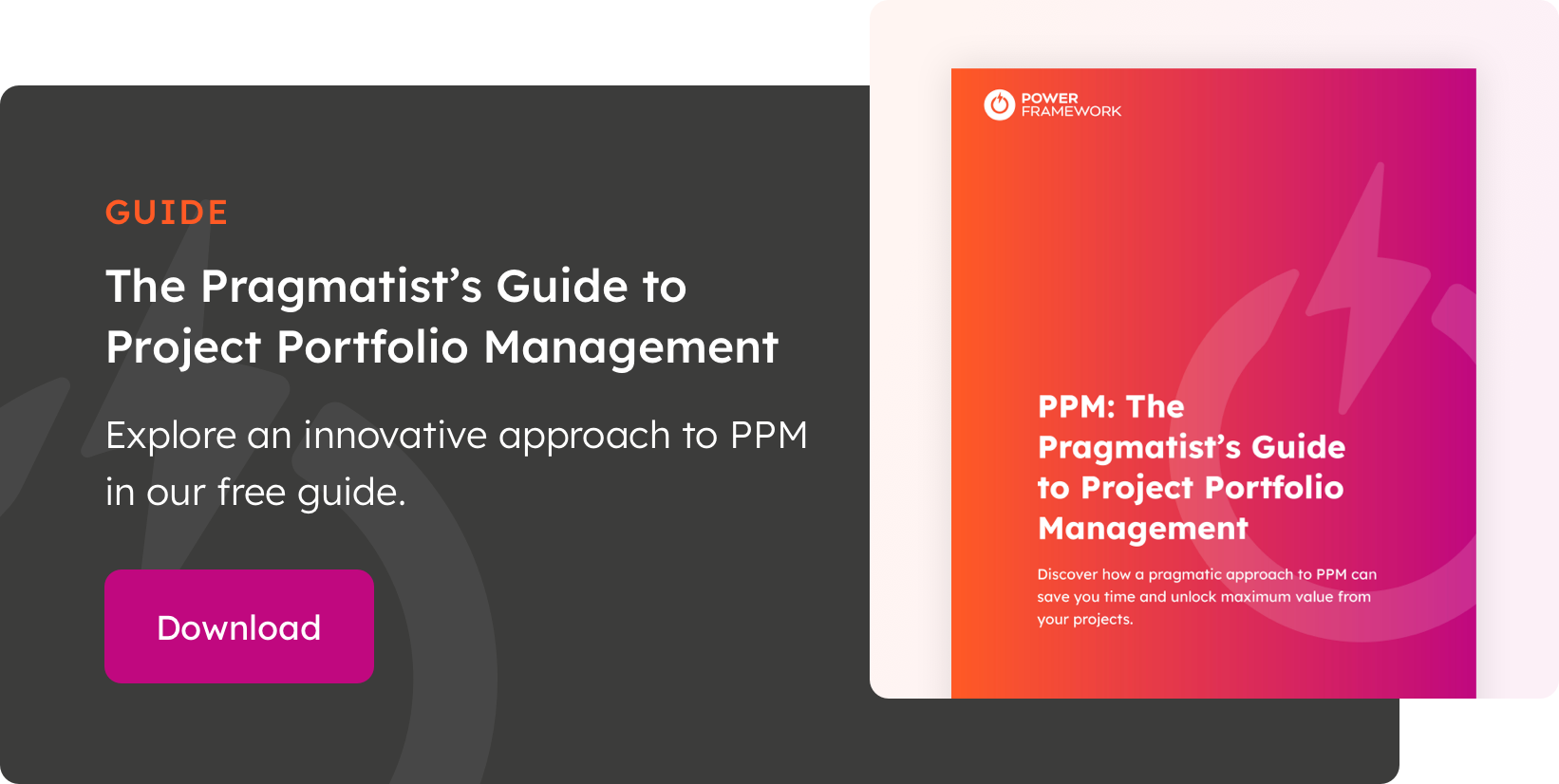An organisation's strategic goals should be the north star for its project portfolio management. A formal prioritisation process can help maintain the relationship between those goals and the work required to achieve them.
Portfolio prioritisation is about aligning projects to strategic goals.
Why is portfolio prioritisation important?
Most projects your organisation undertakes are likely to be in pursuit of strategic goals. Given that resources are limited, not all possible projects can be delivered and some should be delivered sooner than others.
Building the right prioritisation model will help you increase the alignment between projects and strategic goals, ensuring that every project will bring you closer to those goals. And this is critical because according to McKinsey, organisations that invest in strategic prioritisation deliver 40% more value.
Goal-driven prioritisation can provide many benefits:
- Greater return on investment
- High-quality innovation
- More effective resource allocation
- Executive support and team commitment
- Higher project success
Greater return on investment
PMO portfolio management software that aligns with your strategic goals delivers more value to your organisation. But different people might have different values, which is why measuring return on investment is a constant challenge.
High-quality innovation
When project teams understand your organisation's strategic goals, they align their innovative thinking with those goals. They can brainstorm ways of improving performance against those strategic drivers rather than requesting solutions to local problems. Ultimately, this leads to more relevant project requests.
More effective resource allocation
Of course, you want to allocate resources to those projects that deliver the most value. Choosing which project to put ahead of another is a constant challenge. Stakeholder bias, shifting goalposts, and deadline demands all need to be managed.
If you can justify prioritisation by aligning your portfolio to your business goals, these decisions become much easier to make and communicate. Deprioritising or even cutting unnecessary or poorly conceived projects frees up resources that you can deploy more strategically.
Executive support and team commitment
In most organisations, the C-suite sets and owns strategic goals. You’ll get executive support for a portfolio of projects that clearly align with some or all of those goals. This can then translate down the chain to your project teams.
Transparent, value-based prioritisation means that project teams understand why their projects are important. This builds trust in the portfolio. Teams commit more fully to completing projects and are more satisfied with doing so.
Higher project success
Accurate prioritisation of projects at the portfolio level leads to more project success. The reason is the combination of factors listed above. Projects get the appropriate resources, support, and context to set them up for success.
Portfolio prioritisation scoring
How do you create the benchmarks you need to prioritise projects? Scoring models provide a simple numeric score you can use to prioritise the projects in your portfolio.
Portfolio prioritisation models include:
- Specific criteria
- The weight of each criterion
- Scoring mechanisms with value ranges that indicate the level of alignment
Given the importance of strategic goal alignment, it seems logical to prioritise by that criterion alone. But, of course, you must consider other factors. Portfolio prioritisation models often include three categories of criteria:
- Strategic: The most important organisational measure — indicates the degree of strategic alignment of each project.
- Risk: A measurement of the project's riskiness (not project risks) to see how it aligns with your organisation’s appetite for risk.
- Financial: Essential for businesses, this criterion measures quantitative financial value for each project.
With a scoring framework in place, you can apply it to the projects in your portfolio. Over time, you must update scores based on priority shifts, developments, modified assumptions, new priorities, resource constraints, and the daily changes, risks and issues in execution.
How to prioritise your project portfolio in Power Framework
Power Framework provides PMOs with the ability to maintain a list of Strategic Drivers that are important to the organisation. These can be weighted within each portfolio.
For example, the organisation may have a strategy to "increase customer satisfaction", this would be a key driver in its Product Development portfolio but less so in its Internal Systems portfolio, where a driver of "operational cost savings" may be of higher weighting.
By scoring each project proposal against the drivers that are relevant to their portfolio, then applying driver weighting and other factors such as proposed investment, Power Framework can help prioritise your projects.
Resource demand estimates can also be captured to assess the feasibility of delivering a project in light of other projects in demand or execution. Our 'what-if' scenario modelling tool helps to create multiple roadmap options that can be compared to support decision-making.
With the collaboration and PMO governance tools to build an effective innovation pipeline, Power Framework supports from project idea to completion with our PMO portfolio management tools.
Join the conversation with our PPM software experts on LinkedIn.





